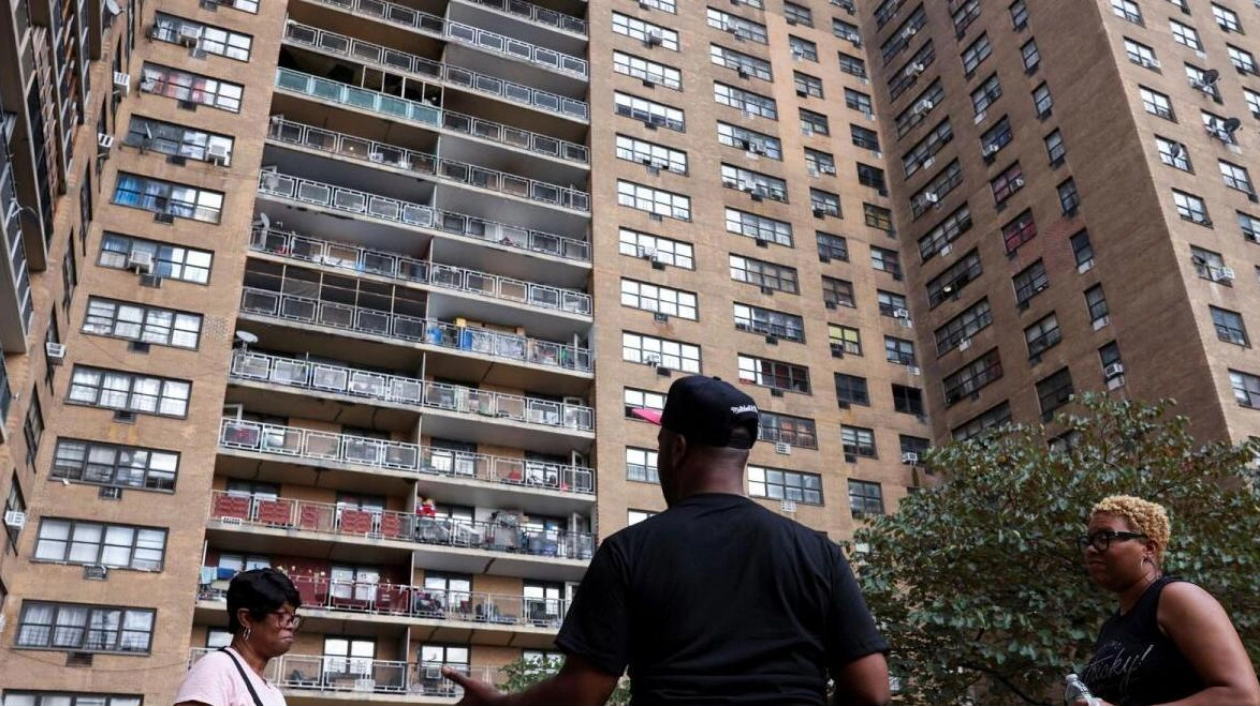Summers in New York City pose significant challenges for Anthony Gay and his family. The only respite they find from the sweltering temperatures in their Brooklyn rental is a small, portable air conditioner in his bedroom. "The rest of the apartment is literally unbearable to walk through," Gay, 40, explained, noting his asthmatic son's struggle to breathe in the heat. Heat-related issues are a serious concern, with an estimated 350 New Yorkers dying prematurely each year due to extreme heat, as reported in the city's 2024 Heat-Related Mortality Report. The report highlights that lack of access to air conditioning at home is a major risk factor in these deaths.
Despite this, approximately 12% of U.S. homes, equating to about 12.7 million households, lacked access to air conditioning in 2020, according to recent government data. Many households, like Gay's, have some form of air conditioning but not enough to effectively combat the heat. A 2022 Boston University analysis revealed that homes with little or no air conditioning are predominantly occupied by low-income residents, often renters, and people of color. This makes them particularly vulnerable as climate change exacerbates heatwaves, making them more frequent, intense, and prolonged. Globally, heat stress now causes more deaths annually than any other weather-related hazard, according to the World Health Organisation, with many of these deaths occurring indoors.
A Reuters survey of housing regulations across all 50 U.S. states found that while nearly half require landlords to maintain existing air conditioning units, none mandate the provision of air conditioning. Rental housing regulations also do not classify air conditioning as an essential service, similar to plumbing, heat, and electricity. However, a growing number of U.S. states, cities, and counties are adopting legislation that sets maximum indoor temperature standards for rental housing. In the past five years, six localities, including New Orleans and Clark County, Nevada, have enacted such cooling laws, a significant increase from the seven adopted in the previous two decades.
Currently, New York City, Los Angeles County, and Austin, Texas, are proposing new indoor temperature maximums for renters. New York is considering a cap of 78 Fahrenheit (26 degrees Celsius), and Austin is mulling over 85 Fahrenheit (29 C), while LA County has yet to finalize its target. These proposals would necessitate landlords to install cooling systems, considering the challenges of retrofitting older buildings for better airflow and other passive measures. These initiatives are facing opposition from powerful landlord lobbies. Similar bills in other jurisdictions, such as California, Texas, and Hot Springs, Arkansas, have been unsuccessful in recent years due to landlords' claims that they would need to raise rents to cover the costs of upgrading home electrical systems and adding air conditioning.
The California Apartment Association, a landlord lobby, opposes a cooling mandate, stating they need to ensure the electrical system is not compromised and costs remain manageable. A 2022 statewide bill in California failed due to landlord resistance, prompting the state legislature to request expert recommendations, suggesting an indoor maximum of 82 F (28 C) for new constructions only. In New York City, Mayor Eric Adams has set a goal for establishing a summer indoor temperature policy by 2030, with his office remaining committed to the 2023 plan. A proposed bill in July would require rental homes to be kept at 78 F or lower once outside temperatures reach 82 F or above, impacting approximately 750,000 renters without air conditioning.
While air conditioning contributes to about 4% of global greenhouse gas emissions, research indicates it also saves lives. A 2016 study estimated a 75% reduction in U.S. heat-related deaths on hot days in the latter half of the 20th century after the introduction of AC. Heat-related deaths are significantly undercounted globally, with the United Nations estimating approximately 489,000 heat-related deaths annually between 2000 and 2019, nearly half of which occurred in Asia. In the U.S., the Centers for Disease Control and Prevention reports an increase in heat-related deaths, with approximately 2,302 in 2023 compared to 1,602 two years prior, though this data is considered an undercount by many experts.
Maricopa County in Arizona, which regularly experiences temperatures over 110 F (43 C), is one of the few places tracking indoor and outdoor heat-related deaths. Despite passing maximum indoor temperature laws, the county recorded 156 indoor heat-related deaths last year, a fivefold increase over the last decade. However, cities like Phoenix and Tempe, with cooling laws, fared better than others in the county. Record-breaking heat waves have spurred new legislation, such as measures in Oregon and Spokane, Washington, limiting landlords' ability to prevent tenants from installing their own air conditioners. However, many warm U.S. cities and states struggle to enact safe temperature laws.
In Arkansas, the city of Hot Springs abandoned a proposal for cooling standards in rental units after landlord complaints. Upgrading a single-family U.S. home to a central air-conditioning system typically costs between $5,000 and $10,000, with an in-window unit costing around $400 plus electrical upgrades for older homes, which can run between $2,000 and $3,000. In Texas, despite city-level indoor temperature standards, a statewide bill stalled due to opposition from the Texas Apartment Association. In Florida, State Senator Jason Pizzo is optimistic about passing an air-conditioning requirement within the next two years, arguing that air conditioning makes economic sense due to Florida's humidity.
In LA County, the board of supervisors is expected to vote on a bill impacting the county's 3.4 million households, over half of whom are renters. Supervisor Lindsey Horvath highlighted the need to regulate indoor heat deaths, similar to the approach taken with indoor cold deaths. By mid-century, central Los Angeles is projected to experience three times more days above 95 F than in the period between 1981 and 2000. Some California tenant groups fear that enforcing apartment upgrades could lead to evictions and higher rents. Landlord associations in L.A. County are also preparing to fight the proposed changes, citing concerns from costs to liability and aesthetics.






